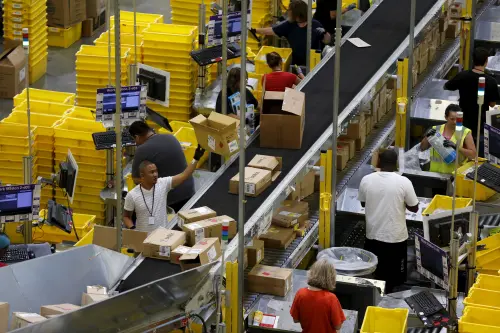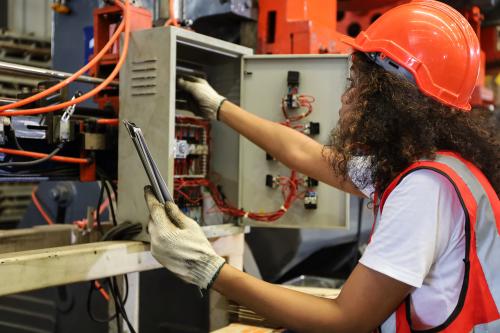Do you ever wonder what the future workforce will look like? What types of new jobs will emerge? What new tools and technologies will be available? Will workers be ready?
Every couple years, economists at the U.S. Bureau of Labor Statistics (BLS) make their best educated guess by estimating what will be the fastest- and slowest-growing jobs nationally. Their latest release looks at how employment will change across hundreds of different occupations from 2016 to 2026; for instance, they project more home health aides will service the country’s aging population, more software developers will define the country’s increasingly digital economy, and more manufacturing workers will continue to disappear.
Although the accuracy of these estimates – like all projections – is imperfect, they offer a glimpse into longer-term labor market shifts. The data are not only useful to researchers, but also to employers, educators, and job seekers looking to fill future positions. After all, with U.S. employment projected to grow by 11.5 million jobs (or 7 percent) over the next decade, it’s clear that the future workforce will be bigger and workers will need to have a bunch of training to fill all these positions.
However, job growth alone will not define the future workforce. BLS economists also keep track of another important measure that is often overlooked: the number of workers leaving jobs.
As the BLS defines them, “occupational separations” measure the number of workers projected to permanently leave their current jobs, due to labor force exits (including retirements) and occupational transfers (including career changes). Across all occupations, the average number of separations is projected to hit about 17.6 million workers each year from 2016 to 2026. In other words, even as new openings emerge as a result of future job growth, there will be far more openings in many occupations as a result of workers leaving their current jobs.
To be sure, many of these openings are in less desirable jobs. On average, about 10.9 percent of U.S. workers are projected to permanently leave their jobs each year, but some occupations are projected to see up to 24.4 percent of their workers permanently leave each year. These high-turnover occupations are often lower-paying and require less specialized training or education, including waiters, cashiers, and life guards. Of the 100 occupations with the highest separation rates, only five pay wages above the national average ($49,630 annually) and only thirteen tend to require a bachelor’s degree or higher.[i] In short, many workers are likely leaving these jobs to pursue better-paying opportunities, to gain additional education, or are simply dropping out of the labor force.
Yet there are several notable exceptions, particularly among the skilled trades and many infrastructure-related jobs, which have lower educational barriers to entry and offer more competitive wages.
As shown in the chart below, a variety of different occupations – from septic tank servicers and sewer pipe cleaners to bus drivers and electricians – are not only projected to have higher separation rates compared to all U.S. jobs, but they also tend to employ workers with only a high school diploma or less. At the same time, some occupations, such as helpers for pipelayers and plumbers, offer clearer pathways to additional training and skills development; other occupations, such as solar photovoltaic installers, are also projected to surge in importance and offer expanded employment opportunities.

Wages in these infrastructure jobs also tend to be higher, especially for workers at the lower end of the income spectrum – at the 10th and 25th percentiles. In fact, they can pay up to 30 percent more at these levels compared to all U.S. jobs. For instance, among the same group of ten infrastructure occupations projected to see high separation rates, all of them pay higher wages at the 10th and 25th percentiles, led by nuclear technicians and gas compressor and pumping station operators.

Not surprisingly, several efforts among employers, schools, and other workforce development groups are already well underway to fill these looming job gaps. For example, among transit agencies looking for more operators and transportation workers, New York, Los Angeles, and numerous other cities are ramping up recruitment and training. Likewise, from San Francisco to Philadelphia, water utilities are actively partnering with schools and other community organizations to prioritize hiring for mission-critical occupations, provide on-the-job training, and strengthen long-term career pathways for prospective workers. In addition, various national and state initiatives – led by the U.S. Department of Transportation, for instance – are raising awareness of the challenge at hand and strengthening region-to-region collaborations to boost shared learning.
Wages in these infrastructure jobs also tend to be higher, especially for workers at the lower end of the income spectrum – at the 10th and 25th percentiles.
Still, many of these efforts remain a work in progress and will require more programmatic support, funding, and coordination across all levels of government and with the private sector. Continued monitoring of labor market trends – including the rise of new technologies – will also remain enormously important and help shed more light on the types of work activities and skillsets demanded in years to come.
As the BLS projections highlight, an enormous part of the future labor market involves workers leaving their jobs, retraining, and seeking new careers. We need to start thinking about them more rather than focusing on job growth alone.
[i] Across all occupations nationally, approximately 36.9 percent of workers hold a bachelor’s degree or higher. However, only 13 of the 100 occupations with the highest separation rates have a higher share of workers holding at least a bachelor’s degree.






Commentary
The future American workforce will have a lot of jobs to fill, particularly in infrastructure
December 7, 2017